
|
|
SUBSIM: The Web's #1 resource for all submarine & naval simulations since 1997
 |
SUBSIM: The Web's #1 resource for all submarine & naval simulations since 1997 |
|
|
 12-14-13, 02:15 AM
12-14-13, 02:15 AM
|
#1 |
|
Eternal Patrol
 |
Spent the whole day not doing much of anything, then went to bed and couldn't sleep. I got back up and started rigging. Now it's past midnight and the rigging is mostly done, and I'm finally ready for bed.
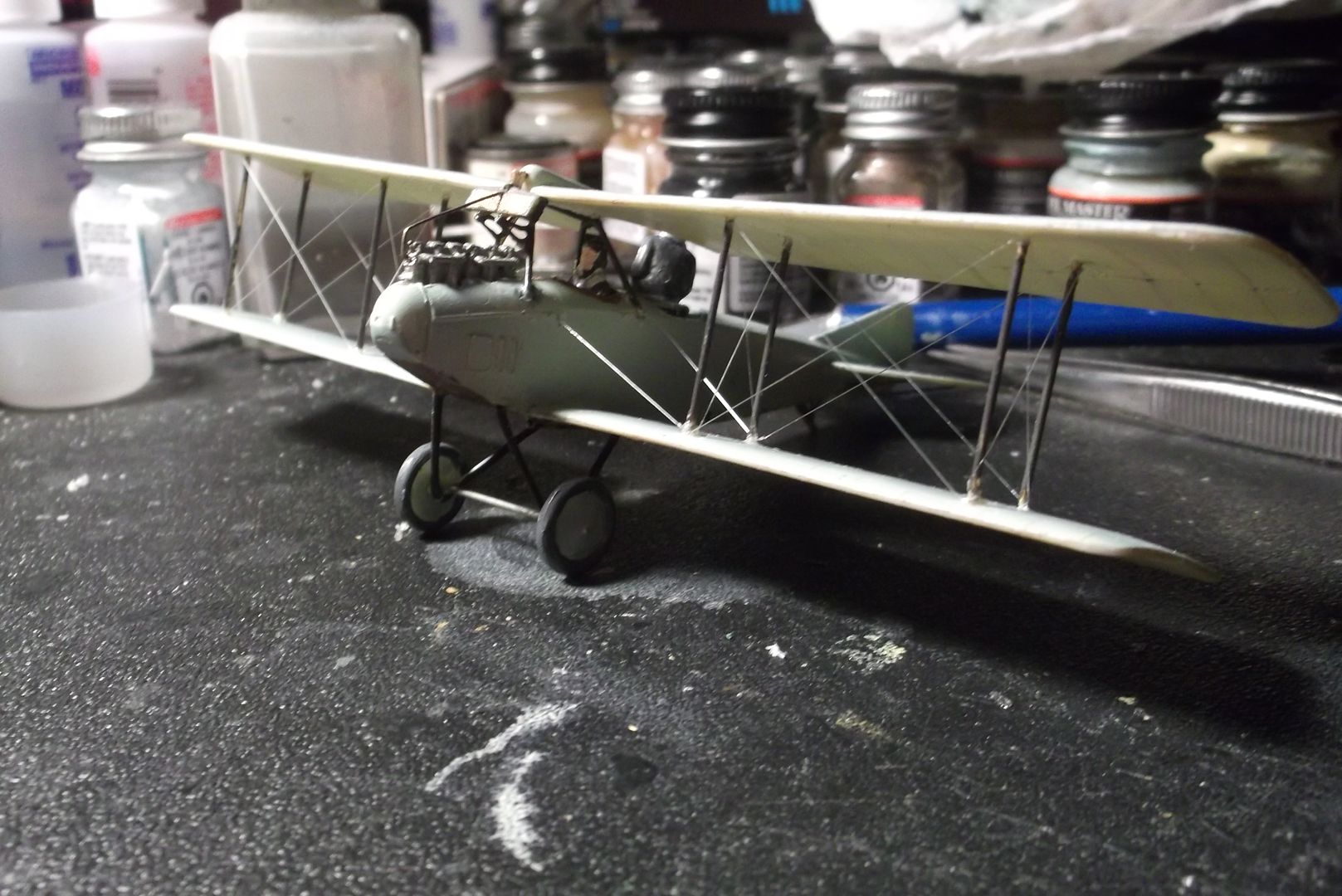
__________________
“Never do anything you can't take back.” —Rocky Russo |

|

|
 12-14-13, 12:25 PM
12-14-13, 12:25 PM
|
#2 |
|
Shark above Space Chicken
|
Nice one. Are you going to leave the prop blades off as if it's running?
__________________
 "However vast the darkness, we must provide our own light." Stanley Kubrick "Tomorrow belongs to those who can hear it coming." David Bowie |

|

|
 12-14-13, 12:37 PM
12-14-13, 12:37 PM
|
#3 |
|
Eternal Patrol
 |
No. That's one concession I tend to make toward unreality. Some players have experimented in the past with clear plastic discs with lines drawn on them to look like the prop is spinning, and someone sometime actually made a decal for just that purpose, with just a few faint lines. I like the props too much, so I always put them on. Of course some get broken off, and then I tend to break off the other side. This is especially true of WW2. On the other hand I'm proud of my Seafire Mk47 with a working contraprop.

__________________
“Never do anything you can't take back.” —Rocky Russo |

|

|
 12-14-13, 12:39 PM
12-14-13, 12:39 PM
|
#4 |
|
SUBSIM Newsman
|
Steve, what costing models to build with all materials included?
__________________
Nothing in life is to be feard,it is only to be understood. Marie Curie 
|

|

|
 12-14-13, 01:16 PM
12-14-13, 01:16 PM
|
#5 |
|
Shark above Space Chicken
|
I see someone that will have some time on their hands. Once down that path you'll be hooked like the dark side after a Jedi.
Making is fun and rewarding. See the video of Adam Savage near the bottom of this site. http://www.tricorderproject.org/blog/
__________________
 "However vast the darkness, we must provide our own light." Stanley Kubrick "Tomorrow belongs to those who can hear it coming." David Bowie |

|

|
 12-14-13, 01:51 PM
12-14-13, 01:51 PM
|
#6 |
|
Chief of the Boat
|
Stick to diecast...far easier.
|

|

|
 12-14-13, 02:53 PM
12-14-13, 02:53 PM
|
#7 |
|
Shark above Space Chicken
|
To each our own. I find the building more rewarding than the having.
__________________
 "However vast the darkness, we must provide our own light." Stanley Kubrick "Tomorrow belongs to those who can hear it coming." David Bowie |

|

|
 12-14-13, 04:04 PM
12-14-13, 04:04 PM
|
#8 | ||
|
Eternal Patrol
 |
I've paid as little as $4 for a plastic kit online, and as much as $40. I don't usually count the extras, but superglue is around $6 for a bottle, and that lasts me a year or more. Paint is around $3 a bottle these days, and that will last a very long time. Overall it's not expensive at all, though I have been looking online at some models that cost $200 or more.
Quote:
 I have a favorite quote that Vendor will understand well. I put it on the 'Quotes' page, but left off the background. Long ago I read a short piece in Readers' Digest that went something like: Quote:
__________________
“Never do anything you can't take back.” —Rocky Russo |
||

|

|
 12-14-13, 04:26 PM
12-14-13, 04:26 PM
|
#9 |
|
SUBSIM Newsman
|
^Very good, thank you!
__________________
Nothing in life is to be feard,it is only to be understood. Marie Curie 
|

|

|
 12-15-13, 01:48 AM
12-15-13, 01:48 AM
|
#10 |
|
Eternal Patrol
 |
It's done: The Albatros C.III. The serial represents one of the second batch - 200 aircraft, and the last group ordered in 1915. I did an early one because, as I mentioned earlier, I ended up with two kits. That leaves this one representing one of the early camoflage attempts and not yet having the synchonized forward gun for the pilot.
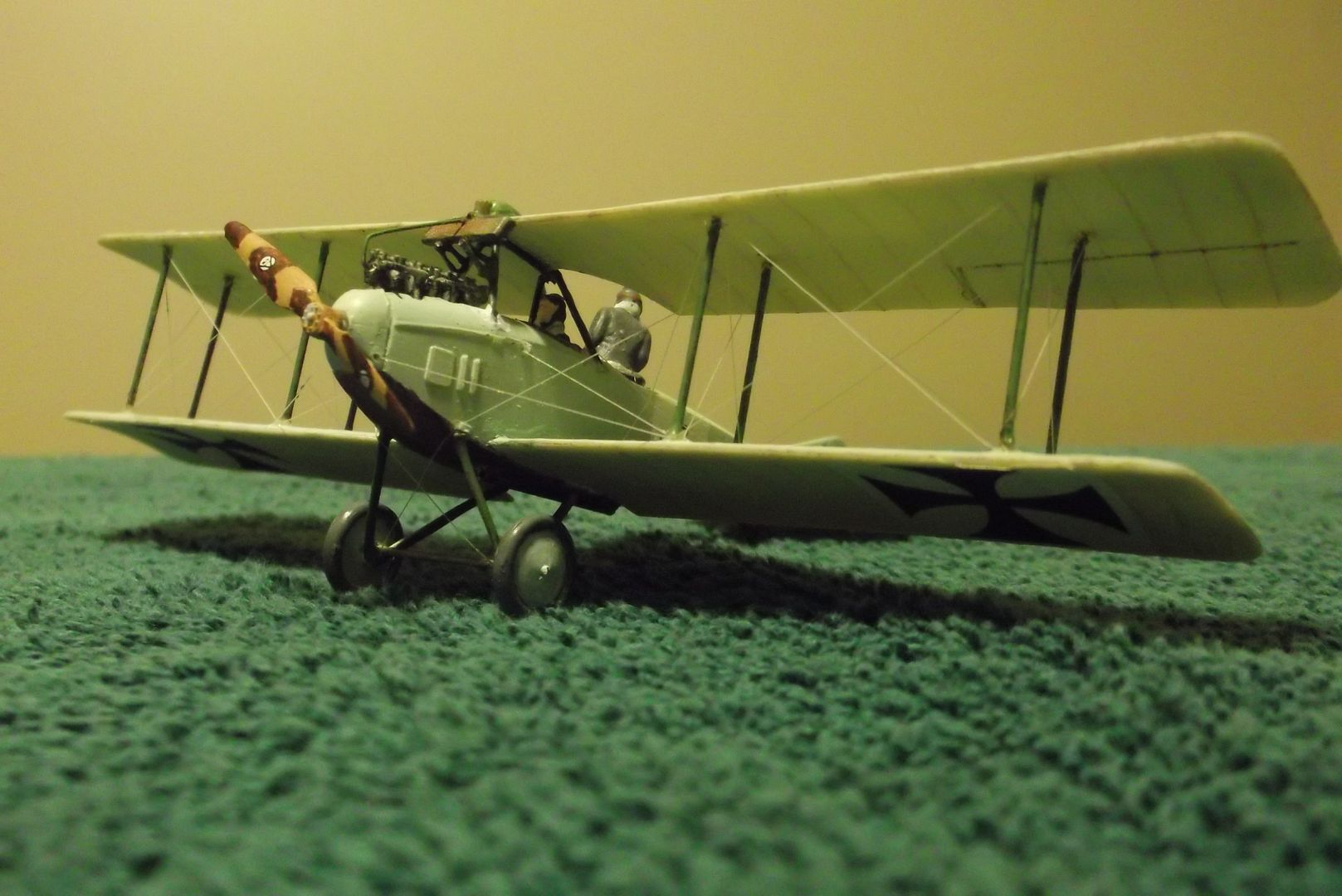 One thing no book I've yet looked at mentions is the changes to the rigging over time. I don't see how the experts could have missed it, so I have to assume they didn't consider it important enough to mention. The first examples don't appear to have had the forward bracing wire running from the nose to the wing spar. In the early planes that do have it, it runs from the bottom metal nose panel to the bottom of the inboard forward strut. Later versions have it run from the nose panel to the top of the inboard rear strut, the same as appears on the earlier Albatros B.II. Second is the upper inboard bracing wires. On the prototype they run from the top of the cabane to the bottom of the inboard struts. On production models they run not to the top of the cabane, but to the bottom - that is, they start where the cabane joins the fuselage. Third is the lower inboard bracing wires, which run from the landing gear struts to the upper inboard struts. On some early models those wires cross each other - front to rear and rear to front. That is represented on this model. Later they all seem to run straight - front to front and rear to rear. I have no idea why this was done. I only know that I've looked at a great many photographs and can attest that it is so. Left Quarter View. 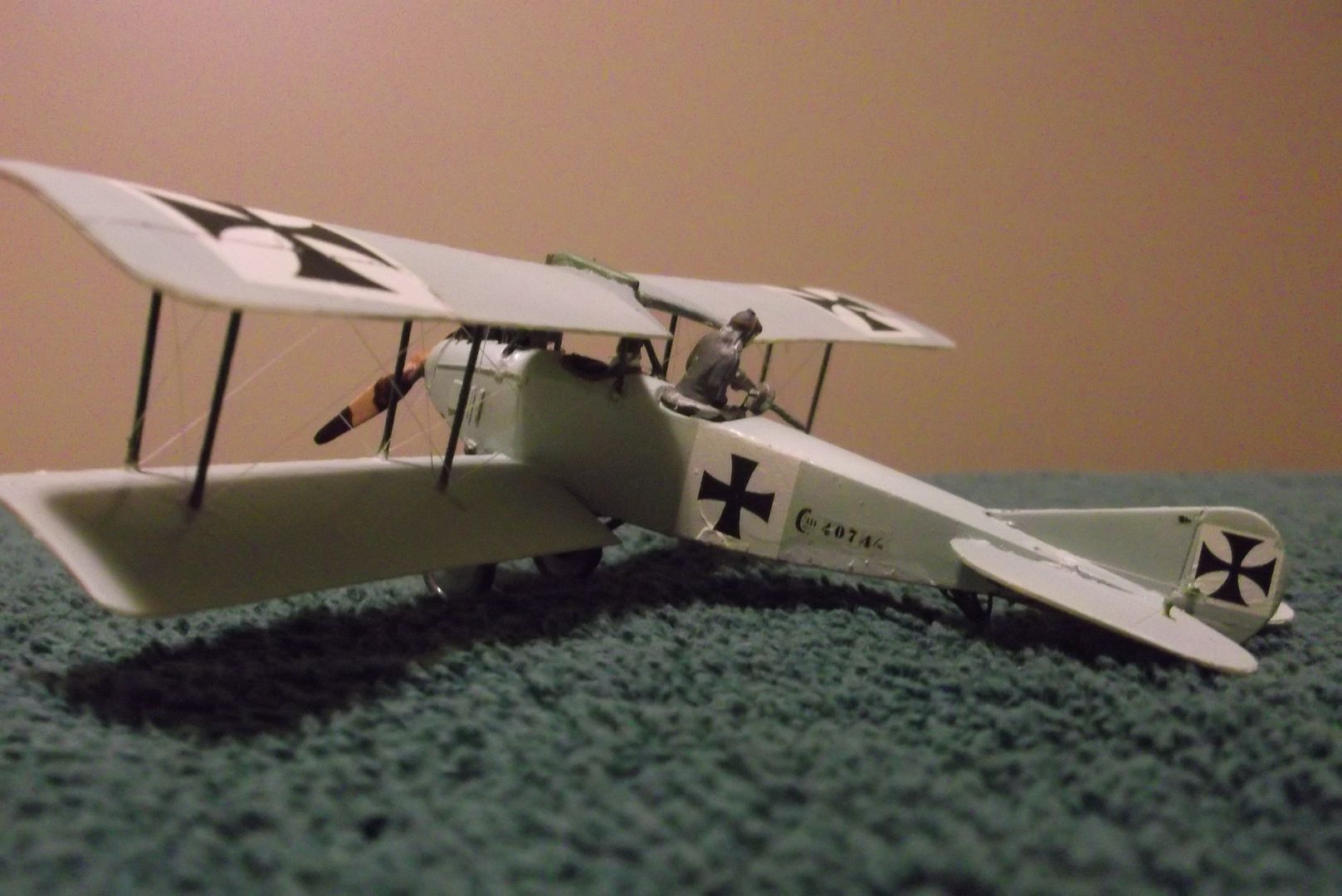 Right Side Close-Up  I have one photograph that shows a serial number with the tiny "III" inside the large "C", and thought it was too cool to pass up. The number itself represents one of that batch of 200 planes, numbered 4000/15 to 4199/15. I promised that I would explain the "backward" camoflage. Idflieg (Inspektion der Fliegertruppen, or Inspectorate of Flying Corps) said in 1915 that they desired some sort of "sky" camoflage. White was tried, as was overall light grey. A very light blue was also tried. At first the blue was painted on all upper and side surfaces of the aircraft. This meant that an enemy fighter looking down from above would see a blue airplane framed against the green and brown earth. Anyone looking up from below would see the blue sky with a brown and yellow airplane. Like I said - backward. Later they painted all the side and lower surfaces blue and the top deck and upper wings grey. Later still, when true camoflage came into use, the pale blue was kept for all undersides. Top View 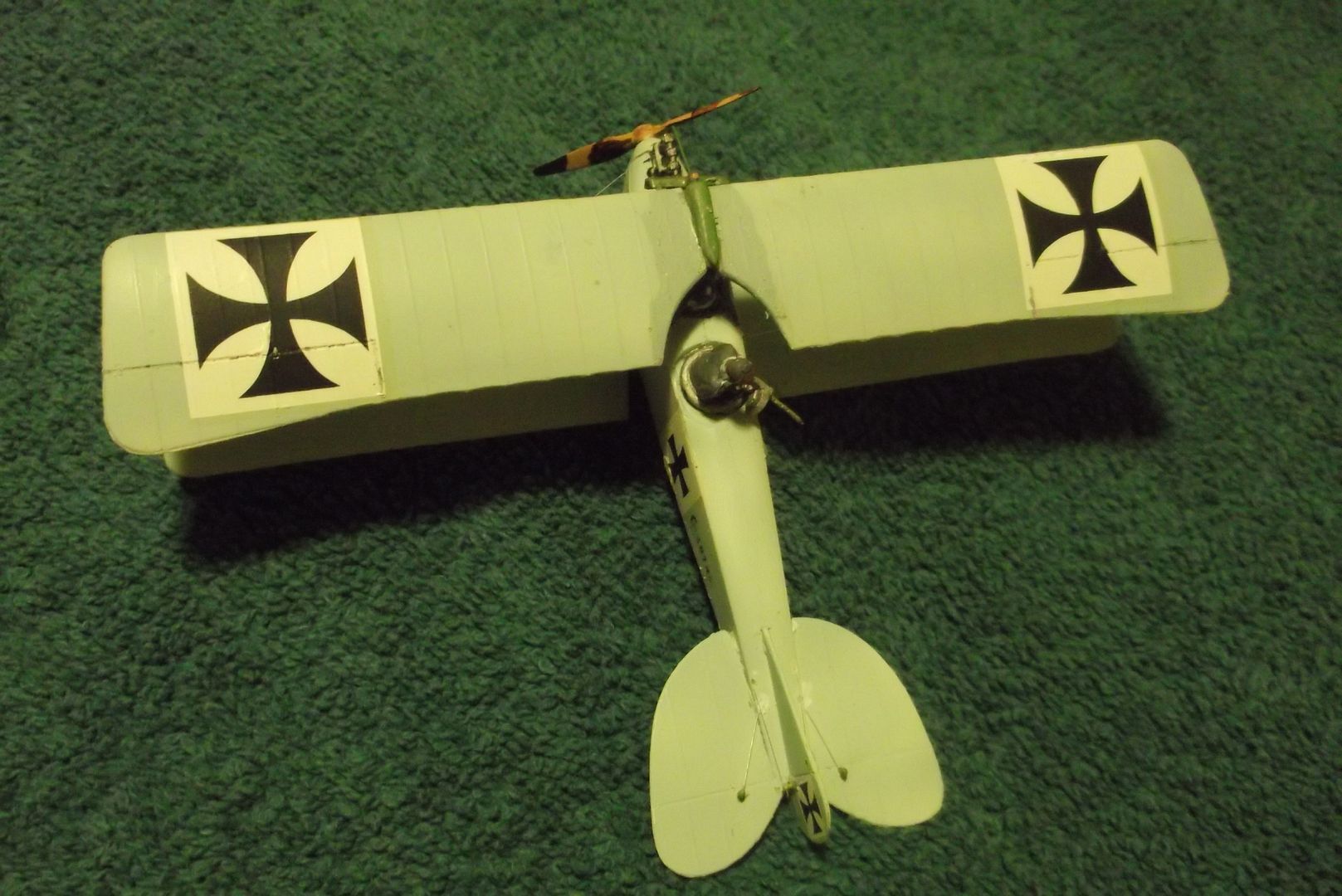 When I built the Albatros C.I I noted the weird things they did with the crosses - top wing white patch not reaching the trailing edge and fuselage cross having a different shape than the others. It's not mentioned in the books, but photos clearly show that this was not a one-off experiment but several C.IIIs have the same application of markings. Bottom View 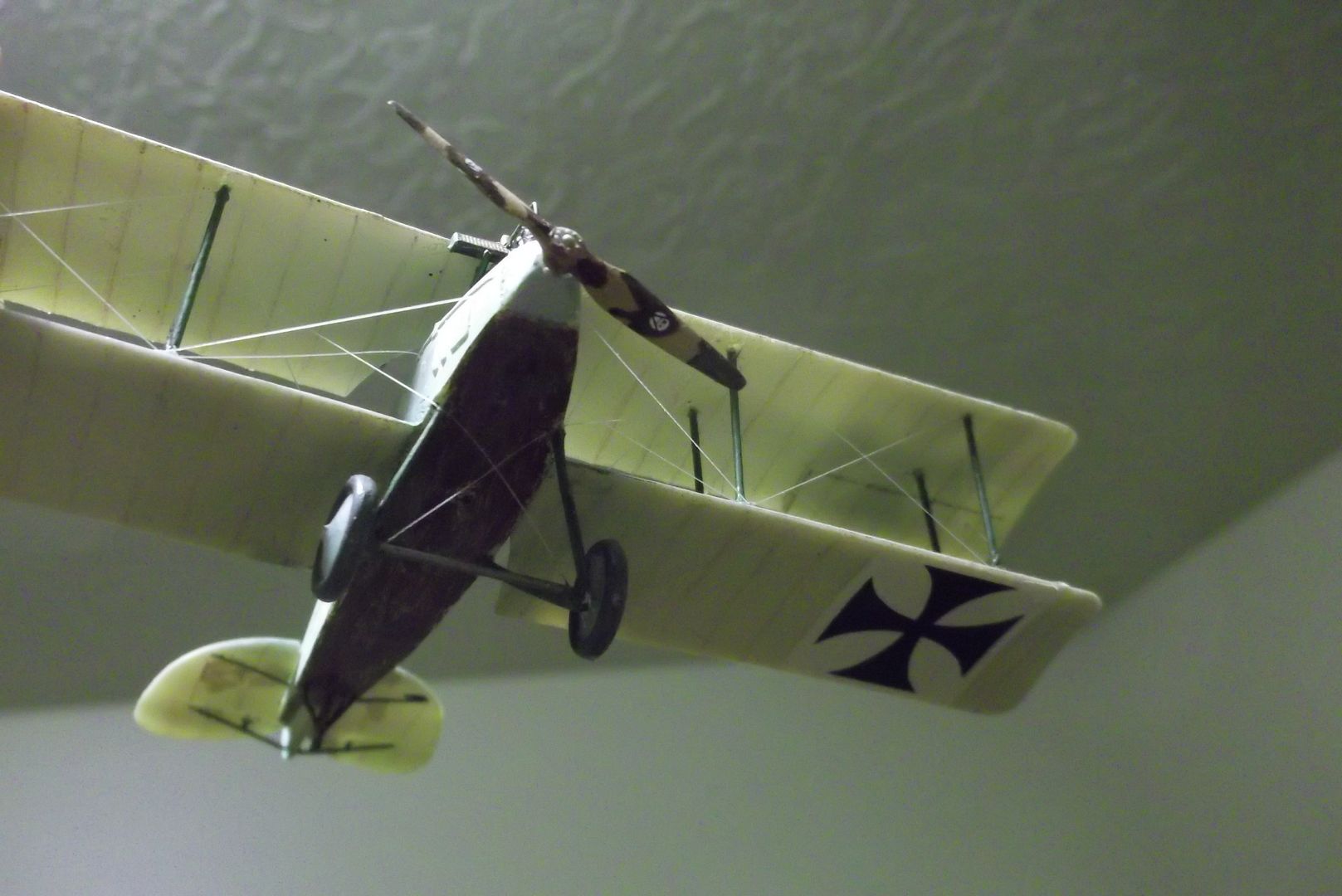
__________________
“Never do anything you can't take back.” —Rocky Russo Last edited by Sailor Steve; 12-15-13 at 02:18 AM. |

|

|
 |
| Tags |
| model |
| Thread Tools | |
| Display Modes | |
|
|
